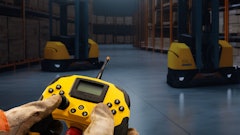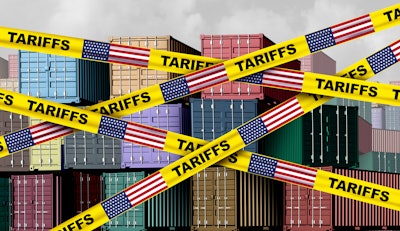
Product-reliant industries are feeling the impact of what may be considered the “year of the tariff” for major players in product supply chains, and recent legal developments render the current environment far from stable. The fast and furious nature of the tariff roll-out in 2025 has left businesses scrambling to develop adaptable and pragmatic strategies to address the additional costs and burden impacting international commerce.
A fast-changing tariff landscape
While President Donald Trump employed tariffs as a trade tool in his first term, businesses that rely on imports have noticed big changes in 2025.
In his first term, Trump relied on Section 232 of the Trade Expansion Act of 1962 to impose tariffs on steel and aluminum imports and Section 301 of the Trade Act of 1974 to impose tariffs on certain products from China. Both laws required the tariff actions to go through an investigation period, during which the industry could weigh in and plan for the proposed tariffs.
Tariffs in 2025 have followed a drastically different route through the International Emergency Economic Powers Act (IEEPA), which gives the president the authority to declare a national emergency and impose certain economic sanctions. Practically, this has meant that major tariff programs have been implemented through a series of executive orders (EOs). While some EOs provide some nominal advance warning before a tariff or modified tariff goes into effect, several tariff changes have been implemented in 2025 on a 24-hour timeline.
Shifting strategies
Some relief valves that were available to businesses during Trump’s first term are no longer available in 2025. Two of the major tariff schemes allowed businesses to challenge application of tariffs to their imports through exclusion processes—processes no longer available. This has put importers of specialized products in a bind, where they can no longer claim exemptions for goods not made domestically.
Another strategy that many businesses employed during the first Trump administration was to shift production and sourcing from China to other markets. While Chinese tariffs remain comparatively high, the imposition of “reciprocal tariffs”—tariffs imposed under IEEPA globally at individualized country rates—have, for some businesses, negated savings previously earned through those moves. This, combined with uncertainty, has made businesses reluctant to incur costs to shift production or change suppliers to new countries.
Businesses are therefore employing different strategies in 2025 to reduce their tariff risks, with an emphasis on the following:
1. Commercial terms: Commercial terms are no longer boilerplate. Companies are strategically revisiting them to manage tariff exposure and reallocate risk across the supply chain. Provisions under the microscope include shipping and pricing terms, force majeure, termination rights, allocation of responsibility, and indemnification—all of which directly affect who bears tariff costs. Below are recent examples of how some businesses are reshaping these terms in practice:
a. Shipping terms (Incoterms): Importers that previously accepted “Delivered Duty Paid” (DDP) terms now insist on “Free on Board” (FOB) so that responsibility for tariffs shifts back to the supplier.
b. Pricing terms: Importers are building in a “tariff-sharing” formula so if duties on imports rise by 10%, the supplier absorbs 5% and the buyer passes only 5% downstream to retailers.
c. Force majeure/termination: Some businesses are adding explicit tariff-related termination rights to exit unprofitable arrangements.
d. Indemnification: U.S. distributors are pressing manufacturers to indemnify against unexpected customs penalties or misclassification of goods.
These negotiations are happening both upstream and downstream. Some Asian-based manufacturers, for instance, have offered to absorb part of the tariff load to keep U.S. buyers locked in. Meanwhile, U.S. distributors are negotiating pricing adjustments with big-box retailers to avoid swallowing the full increase themselves. Creative drafting—such as conditional pricing formulas linked to tariff schedules or automatic renegotiation triggers—gives companies room to adapt to shifting trade policies instead of being trapped in static contracts.
2. Valuation: Tariffs are assessed as a percentage of the value of the goods when they enter the United States, so businesses are looking for ways to reduce the dutiable value of their shipments and ultimately pay less in tariffs. Businesses that have defaulted to paying duties based on the negotiated price are now attempting to itemize costs that may be excluded from the value for tariff purposes, such as some shipping costs. Importers should be wary of supplier proposals to restructure deals with artificially low product costs and inflated “services” fees, a common but illegal method for reporting a lower value.
3. Country of origin: Businesses are scrutinizing prior determinations of “country of origin” for goods manufactured in more than one location. Where a good is partially made in Switzerland (49% tariff rate) and completed in the United Kingdom (10% tariff rate), an importer may have a strong preference for determining that the product is UK-based. There is only one right answer, but businesses are now incentivized to reexamine that answer and, in some cases, to shift parts of their procurement or manufacturing process to the country with the lower rate.
4. Shipping strategy: When companies understand the country of origin rules that apply, they can optimize their shipping strategy. Companies can examine whether components from different countries could be directly shipped and assembled in the United States or other final destination to take advantage of lower rates for certain countries and lower values of components when shipping from higher rate countries. Importers that later export goods can also take advantage of certain refunds such as duty drawback, or companies can employ drop shipping to foreign customers. Bonded warehouses, too, can be useful tools for businesses that want to have product ready to ship quickly when tariff rates drop or pay tariffs only when customers place an order.
Stepped up enforcement
While new tariffs are leading to creative thinking to reduce tariff exposure, the federal government is cracking down on businesses that engage in unlawful practices to reduce tariffs paid on imports. U.S. Customs and Border Patrol is actively shifting personnel and may employ artificial intelligence for more aggressive enforcement activities, including stricter scrutiny of shipments. The Department of Justice also is pursuing tariff avoiders vigorously under newly formed units. Executives and corporations who violate tariff laws will now face the risk of significant prison sentences and increased fines for criminal charges.
Uncertain future
Businesses that have employed a wait-and-see strategy may be counting on a legal victory to provide relief. On May 28, a three-judge panel of the U.S. Court of International Trade in V.O.S. Selections Inc. v. U.S. issued a unanimous decision that the IEEPA does not authorize the imposition of broad tariffs without a clearly defined and substantiated national emergency. The decision was upheld by a vote of 7-4 at the U.S. Court of Appeals for the Federal Circuit on Aug. 29.
The Supreme Court has agreed to hear the case, along with a similar case, Learning Resources, Inc., et al. v. Trump, et al., on an expedited basis. Oral arguments are scheduled for the first week of November. If the rulings are upheld, they would unwind the majority (but not all) of the tariffs imposed in 2025 and drastically alter the White House's approach to future tariffs.
Businesses should continue to plan for long-term tariff strategies and work with experienced legal counsel who can help them understand the complexities and nuances of the various strategies and guide them through this developing and unstable environment.
Ice Miller associates Grace Dahm and Emily Bullen contributed to this article.


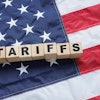

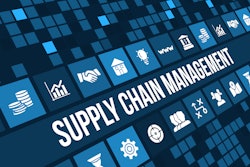

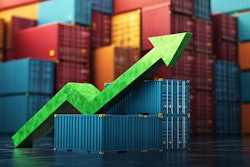


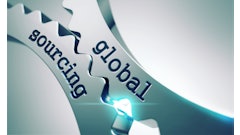
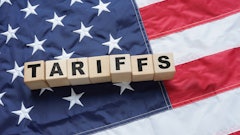


![Pros To Know 2026 [color]](https://img.sdcexec.com/mindful/acbm/workspaces/default/uploads/2025/08/prostoknow-2026-color.mduFvhpgMk.png?ar=16%3A9&auto=format%2Ccompress&bg=fff&fill-color=fff&fit=fill&h=135&q=70&w=240)


